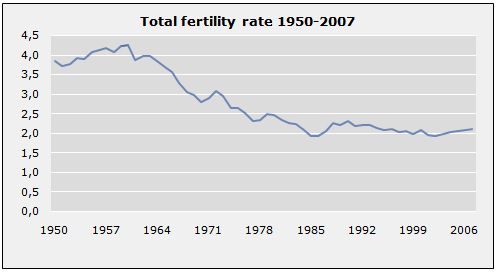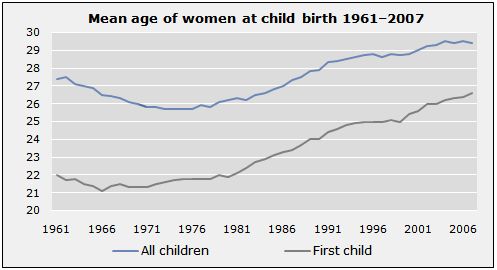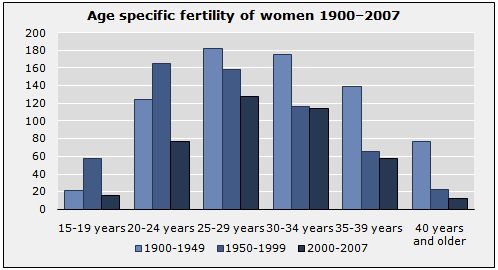Live births in Iceland were 4,560 in 2007. The total fertility rate was 2.1, compared with 2.07 in 2006 and 2.05 in 2005. During the 20th century, the total fertility rate peaked during the early 1960s. Between the mid 1960s and the early 1980s there was a steady decline in total fertility rate. The rate has remained stable since then, around 2.0.

Fertility in Iceland is higher than elsewhere in Europe. In 2006 it was 2.0 in France, and 1.93 in Ireland. The total fertility rate was also above the European average in the other Scandinavian countries, ranging from 1.83 in Denmark to 1.9 in Norway. In the United Kingdom the total fertility rate was 1.84 in 2006. The lowest fertility rate in Europe in 2006 was 1.24 in Slovakia.

The age of mothers at the birth of a child has increased in recent decades. The mean age of primparas in 2007 was 26.6 years, compared with 22 years in the 1970s. The mean age of mothers at the birth of a child has been similar for the past few years; in 2007 it was 29.4 years. Fertility rate is highest in the age group 25-29 years.

Over half of the children born in 2007 were born out of wedlock. Most of them, however, were born to parents in consensual union (49.3%), but 14.4% were born to parents that were not living together. Just over a third (36.2%) was born in wedlock.
Statistics